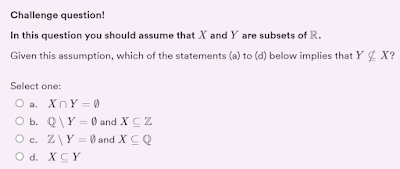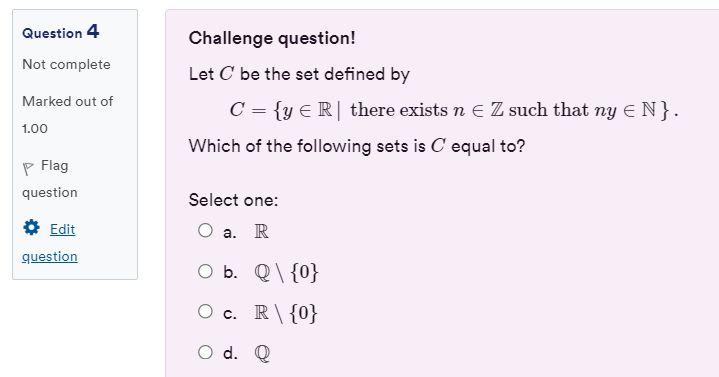Challenge questions from FPM quizzes: First quiz on sets and subsets

My fourth FPM quiz last autumn was on sets and subsets. Again the "challenge" question isn't too hard, as long as you understand the basic concepts and definitions, though it is easy to make mistakes. Here is a screenshot of the question. As usual, the buttons don't do anything, but you can enlarge the image by clicking on it. Click on the screenshot to enlarge the image Here \(\mathbb{R}\), \(\mathbb{Q}\) and \(\mathbb{Z}\) have their usual meanings, and \(\emptyset\) is the empty set. You also need to know about the operations of intersection (denoted by \(\cap\)) and set difference (denoted by a backslash, \(\setminus\)) and the "subset" relation (denoted by \(\subseteq\)). Here I use the "subset or equals" notation \(\subseteq\) to make it clear that sets which are equal do count as subsets of each other. In particular, note that the notation \(Y \nsubseteq X\) means that \(Y\) is not a subset of \(X\), which is equivalent to saying tha



